| 1.
|
The Wise Woman – The Gendered Ideal of Marital Virtue (c. 1525)
A 16th-century woman lived under the authority of the men in her life. Unless she lived in community with other women – a practice that survived the Protestant reformation in Catholic lands but also....
|
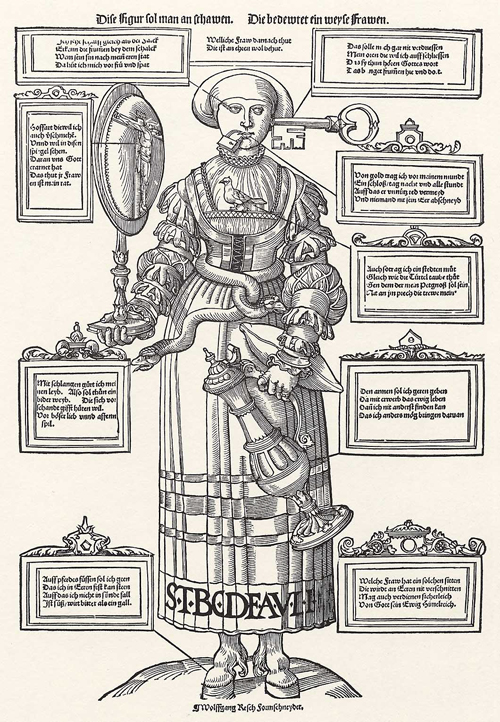
|
| 2.
|
Martin Luther and his Wife (1529)
This diptych, one of the many portraits of Martin Luther by Lucas Cranach the Elder, shows the reformer with his wife, Katharina von Bora (1499-1552), four years after they were married. Oil painting....
|
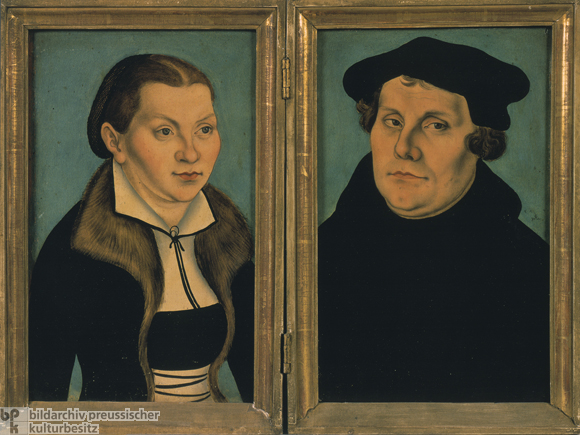
|
| 3.
|
Table Manners (c. 1540)
This image is accompanied by a text by Hans Sachs about proper table manners. Among other instructions, the text states that one should sit down at the table with clean hands and trimmed fingernails,....
|
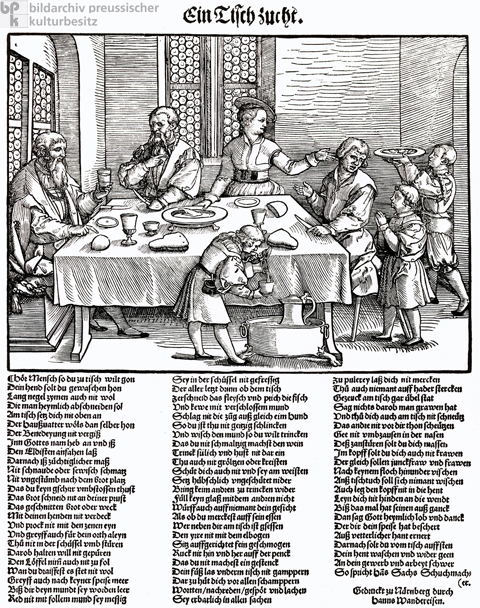
|
| 4.
|
Old Man with a Young Woman (1st Half of the 16th Century)
The need for relative age equality between husband and wife was addressed in the rapidly growing literature on the conditions of a happy marriage. It was thought that ignoring prescriptive literature....
|
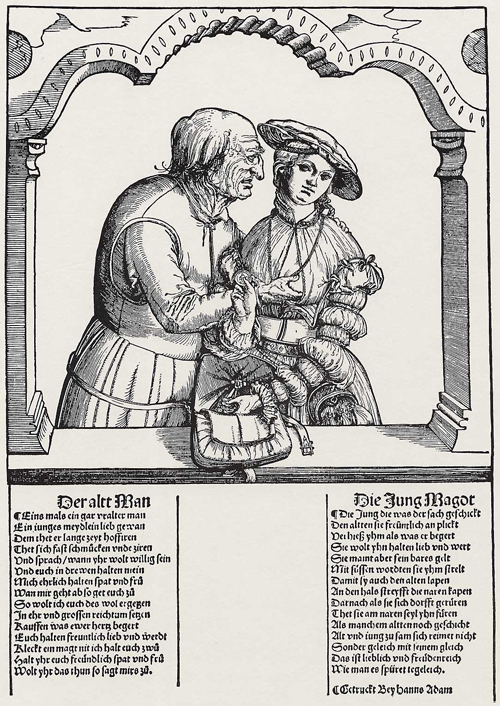
|
| 5.
|
Old Woman with a Young Man (1st Half of the 16th Century)
The need for relative age equality between husband and wife was addressed in the rapidly growing literature on the conditions of a happy marriage. It was thought that ignoring prescriptive literature....
|
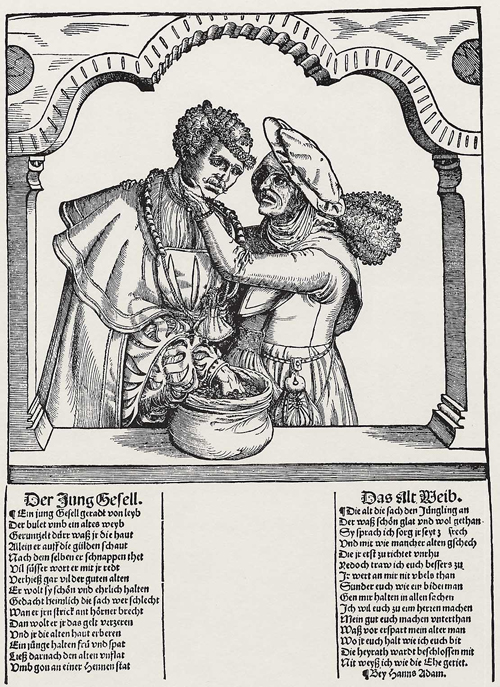
|
| 6.
|
Leonhard von Eck (1553)
Leonhard von Eck (1480-1550) was a Bavarian nobleman who served as chancellor of Bavaria for thirty years. The woodcut below is one of two pendant portraits commissioned by his widow, Felicitas....
|
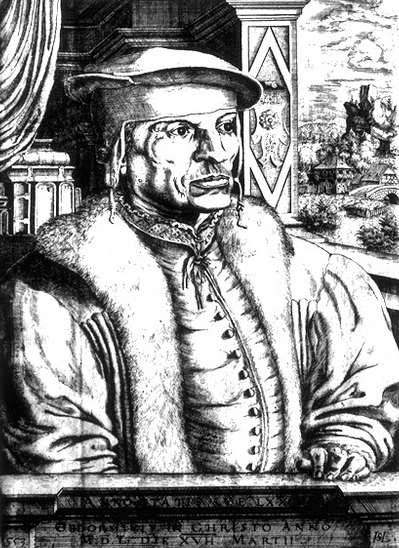
|
| 7.
|
Felicitas von Freyberg (1553)
Felicitas von Freyberg (1492-after 1553) was the wife of Leonhard von Eck (1480-1550), a Bavarian....
|
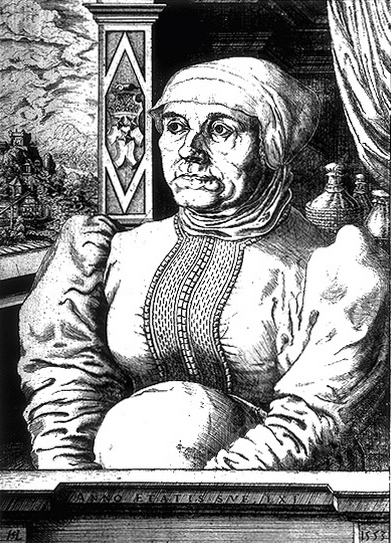
|
| 8.
|
Nobles Dancing at a Ball (2nd Half of 16th Century)
This image of two elegantly dressed nobles is part of a series of eight woodcuts entitled The Ball. Attributed to Christoph Murer, the series depicts various dancing couples and a quartet....
|
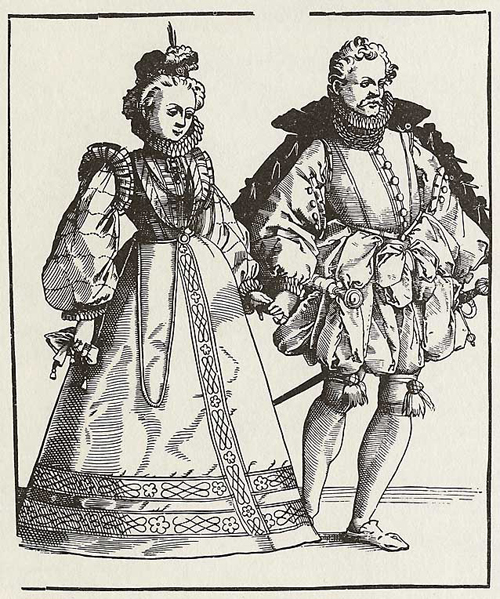
|
| 9.
|
Plague in the House (16th Century)
The image below depicts a woman dying of the plague. She is surrounded by human and animal corpses, and her attendants have no better protection than handkerchiefs pressed to their faces. Woodcut....
|

|
| 10.
|
Child Eater (17th Century)
The image and accompanying text explain that disobedient children who do not come back inside will be snatched and eaten by this wicked character called the Child Eater [Kinderfresser]. He....
|
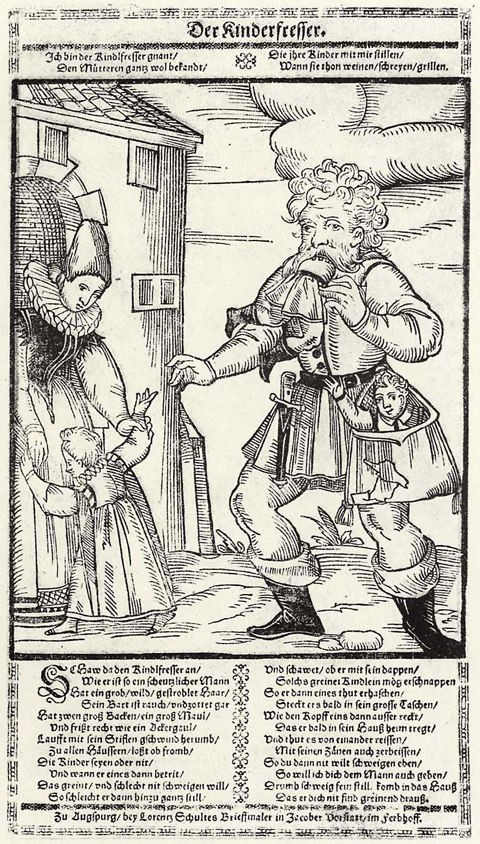
|














 return to chapter list
return to chapter list









